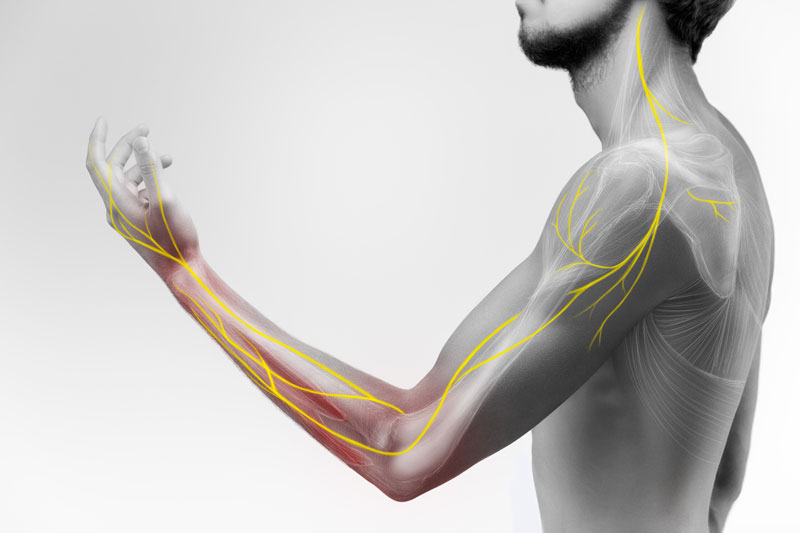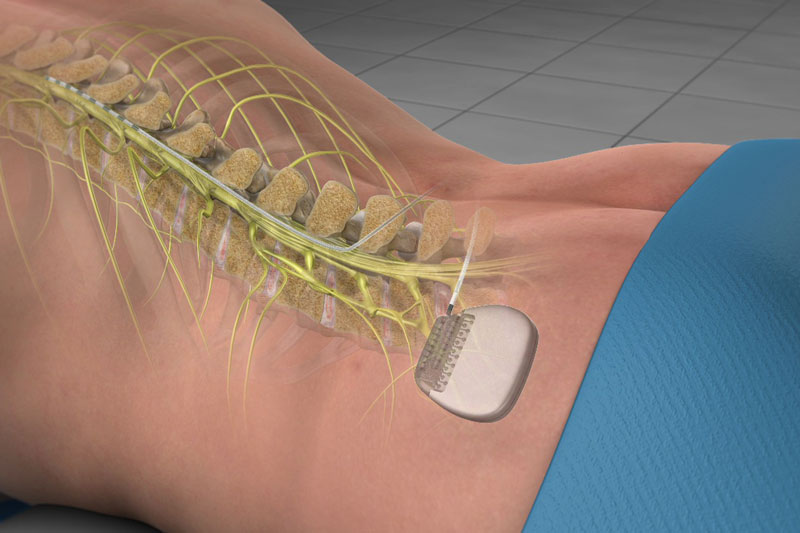Pain management injections are medical procedures designed to provide relief from various forms of pain and improve function so patients can return to a higher level of function. These injections involve the precise delivery of medications directly into the affected area to reduce inflammation, alleviate pain, and improve a patient’s overall quality of life.
At Ponte Vedra Spine and Pain, our mission is to provide compassionate, patient-centered care to residents in Ponte Vedra and the surrounding areas. We are committed to helping you find relief through the use of various pain management injections. Our experienced team utilizes the latest techniques and technologies to ensure you receive the most effective and minimally invasive treatments available. Contact us today to schedule a consultation and take the first step towards a pain-free future.
What are Pain Management Injections?
Pain management injections are medical procedures that involve the injection of medications directly into specific areas of the body to alleviate pain and manage various painful conditions. These injections are commonly used when targeted pain management is necessary. There are many types of pain management injections and some include:
1. Epidural Steroid Injections: These injections deliver anti-inflammatory medications and/or local anesthetics into the epidural space around the spinal cord. They are often used to relieve pain associated with conditions like herniated discs, spinal stenosis, and radiculopathy.
2. Joint Injections: These injections deliver anti-inflammatory medications, local anesthetics, hyaluronic acid and are administered directly into joints affected by inflammatory conditions such as osteoarthritis or rheumatoid arthritis. Commonly treated joints include the knee, hip, shoulder, and facet joints in the spine.
3. Trigger Point Injections: These injections involve the injection of local anesthetics or medications into specific trigger points in muscles. They are used to relieve muscle pain, spasms, and knots often associated with conditions like myofascial pain syndrome.
4. Nerve Blocks: Various nerve blocks target specific nerves or nerve groups to block pain signals. Examples include sympathetic nerve blocks for complex regional pain syndrome (CRPS) and selective nerve root blocks for diagnosing and treating sciatic pain or nerve pain from the neck and low back.
5. Facet Joint Injections: These injections target the facet joints of the spine, which can be a source of back or neck pain. They typically include a local anesthetic and corticosteroid to reduce inflammation.
6. Sacroiliac Joint Injections: Administered into the sacroiliac joint, these injections can relieve pain associated with sacroiliac joint dysfunction.
7. Peripheral Nerve Blocks: These blocks target specific peripheral nerves to manage pain in areas like the knees, ankles, shoulders, and hands.
Pain management injections are typically performed by an interventional pain management specialist. The choice of injection depends on the specific condition and location of the pain, and it is determined after a thorough evaluation. These injections can provide targeted pain relief and improve a patient’s quality of life when other treatments have proven less effective.

Why are Pain Management Injections Performed?
Pain management injections are performed for several reasons, primarily aimed at relieving pain and improving the quality of life for individuals dealing with various painful conditions. These injections are utilized when targeted pain relief is necessary. Here are some common reasons why pain management injections are performed:
1. Chronic Pain Relief: Pain management injections are often employed to provide relief from chronic pain conditions that persist over an extended period. These may include chronic back pain, neck pain, and joint pain.
2. Inflammatory Conditions: Injections are used to manage pain associated with inflammatory conditions like osteoarthritis, rheumatoid arthritis, bursitis, and tendonitis by reducing inflammation within joints or soft tissues.
3. Neuropathic Pain: Certain injections, like nerve blocks or epidural injections, target neuropathic pain conditions. These injections can alleviate pain stemming from nerve compression, irritation, or injury.
4. Musculoskeletal Pain: Pain management injections, including trigger point injections, are used to address muscle pain, spasms, and knots in conditions like myofascial pain syndrome.
5. Joint Pain: Joint injections, such as hyaluronic acid injections, aim to provide pain relief by lubricating and cushioning the affected joint, often in cases of osteoarthritis.
6. Diagnostic Purposes: Some injections serve diagnostic purposes, helping healthcare providers identify the source of pain. For example, selective nerve root blocks can pinpoint the exact nerve causing pain symptoms.
7. Minimally Invasive Treatment: Injections are generally minimally invasive procedures that offer targeted pain relief with minimal disruption to the surrounding tissues. They are often preferred over more invasive surgical options.
8. Avoidance of Systemic Side Effects: In some cases, pain management injections can provide pain relief without the systemic side effects commonly associated with oral pain medications.
9. Regenerative Medicine: Injections like Platelet-Rich Plasma (PRP) and Bone Marrow Aspirate (BMA) are used for regenerative purposes, promoting tissue healing and regeneration in cases of orthopedic injuries or degenerative conditions.
10. Improved Quality of Life: Ultimately, the goal of pain management injections is to enhance a patient’s overall quality of life by reducing pain, increasing functionality, and allowing individuals to engage in daily activities more comfortably.
The decision to perform a pain management injection is typically based on a thorough evaluation considering the patient’s specific condition, the location and severity of pain, and the potential benefits of the injection in alleviating pain and improving function.
How are Pain Management Injections Performed?
Pain management injections are performed using precise techniques to administer medications directly to the site of pain. The specific method and procedure can vary depending on the type of injection and the location of the pain. Here is a general overview of how pain management injections are typically performed:
1. Patient Evaluation:
- Before the procedure, the physician conducts a thorough evaluation, including a medical history review and physical examination, to determine the appropriateness of the injection and identify the source of the pain.
2. Informed Consent:
- The healthcare provider explains the procedure, its potential risks and benefits, and obtains informed consent from the patient.
3. Preparation:
- The patient may be asked to change into a gown, and the treatment area is cleaned and sterilized to reduce the risk of infection.
4. Local Anesthesia:
- A local anesthetic is administered to numb the skin and deeper tissues at the injection site. This helps minimize discomfort during the procedure.
5. Needle Placement:
- Using fluoroscopy (real-time X-ray), ultrasound, or other imaging guidance, the healthcare provider precisely places a thin needle or catheter at the targeted location. The choice of imaging technique depends on the specific injection and its location.
6. Medication Injection:
- Once the needle is correctly positioned, the physician injects the medication, which may include corticosteroids, local anesthetics, hyaluronic acid, Platelet-Rich Plasma (PRP), Bone Marrow Aspirate (BMA), or other appropriate medications. The medication aims to reduce inflammation, block pain signals, or promote tissue healing, depending on the specific injection type.
7. Post-Procedure Care:
- After the injection, the patient is monitored for a brief period.
- Depending on the specific injection, the patient may be advised to rest or avoid certain activities for a specified time.
9. Follow-Up:
- The physician typically schedules follow-up appointments to assess the effectiveness of the injection and the patient’s response to treatment. Adjustments to the treatment plan may be made based on the outcomes.
10. Potential Repeat Procedures:
- In some cases, a series of injections or repeat procedures may be necessary to achieve and maintain long-term pain relief.
Pain management injections are generally considered safe and effective when performed by trained and experienced physicians. The choice of injection and technique depends on the patient’s specific condition and the goals of pain management.
What to Expect After a Pain Management Injection
After undergoing a pain management injection, there are several expectations and considerations for the post-procedure period. Here’s what you can generally expect:
Immediate Post-Procedure Period:
1. Recovery Area: You may be monitored for a short period to ensure there are no immediate complications or adverse reactions to the injection.
2. Temporary Numbness or Weakness: Depending on the type of injection and the medications used, you may experience temporary numbness or muscle weakness in the treated area. This is usually a result of the local anesthetic and typically resolves within a few hours.
3. Discomfort: You may experience some discomfort or soreness at the injection site or in the affected area. This discomfort is typically mild to moderate and can vary depending on the type of injection.
Activity and Recovery:
1. Resume Normal Activities: In many cases, you can resume most of your normal daily activities after the procedure. However, your physician will provide specific guidance based on your condition and the type of injection performed.
2. Limitations: You may be advised to avoid strenuous activities, heavy lifting, or certain movements for a specified period to allow the injection to take effect and reduce the risk of complications.
Pain Relief Timeline:
1. Onset of Relief: The onset of pain relief can vary depending on the type of injection and your individual response to treatment. Some individuals experience immediate relief, while others may require a few days to a couple of weeks for the medication to take full effect
2. Duration of Relief: The duration of pain relief can also vary. Some injections provide temporary relief that may last for weeks or months, while others may offer longer-lasting benefits.
Follow-Up Appointments:
1. Scheduled Follow-Up: Your physician will typically schedule follow-up appointments to assess the effectiveness of the injection and monitor your progress.
2. Adjustments: Depending on your response to the injection, your physician may make adjustments to your treatment plan, which could include additional injections or modifications to the medication.
Monitoring and Communication:
1. Pay Attention to Changes: Be mindful of any changes in your pain levels or symptoms following the injection. If you experience any unusual or concerning symptoms, such as signs of infection, severe pain, or allergic reactions, contact your physician promptly.
2. Communication: Maintain open communication with your physician regarding your pain levels, the duration of relief, and any concerns you may have during the post-procedure period.
It’s essential to follow your physician’s post-procedure instructions carefully, including any prescribed medications and activity restrictions. Pain management injections are typically safe and effective when performed by experienced physicians, and they can significantly improve your comfort and quality of life. However, individual responses to treatment may vary, so ongoing communication with your healthcare provider is crucial for optimizing your pain management plan.
Frequently Asked Questions about pain management injections
Here’s a list of frequently asked questions (FAQs) about pain management injections, along with brief answers:
1. What are pain management injections, and how do they work?
- Pain management injections involve the injection of medications directly into the affected area to reduce inflammation, block pain signals, or promote tissue healing. They work by targeting the source of pain.
2. What types of conditions can be treated with pain management injections?
- Pain management injections can be used to treat a wide range of conditions, including arthritis, joint pain, back pain, neck pain, neuropathic pain, muscle spasms, and more.
3. How long does pain relief from these injections last?
- The duration of pain relief varies depending on the type of injection, the underlying condition, and individual responses. Some injections provide temporary relief, while others offer longer-lasting benefits.
4. Are pain management injections safe?
- Pain management injections are generally safe when administered by a trained physician. However, like any medical procedure, there are potential risks and side effects, which we will discuss with you.
5. What can I expect during the injection procedure?
- During the procedure, you will receive local anesthesia to numb the area, followed by the injection of medication. The procedure is typically well-tolerated and minimally invasive.
6. Are there any potential side effects or risks associated with pain management injections?
- While uncommon, potential side effects may include infection, bleeding, allergic reactions, or temporary numbness or weakness.
7. How soon can I expect pain relief after the injection?
- Pain relief can vary. Some individuals may experience immediate relief, while others may require a few days to a couple of weeks for the medication to take full effect.
8. Can I resume normal activities after the injection?
- In many cases, you can resume most of your normal activities shortly after the procedure. However, your physician may recommend some limitations or restrictions based on your condition.
9. How many injections might I need for effective pain management?
- The number of injections needed varies based on the underlying condition and your individual response to treatment. Some individuals require only one injection, while others may benefit from a series of injections or periodic treatments.
These FAQs provide a general understanding of pain management injections, but it’s essential to discuss your specific questions and concerns with your physician before undergoing any injection procedure.













